Are you into rock climbing? AMC has a community of outdoor enthusiasts who are ready to climb with you! New climbing classes, excursions, and meetups are always being listed on Outdoors Connector.
If you’re looking to strengthen your climbing muscles in the meantime, here are some home exercises for rock climbers that you can do to stay in shape for hard sends and pulling plastic.
Door Frame Pull-ups (upper body)
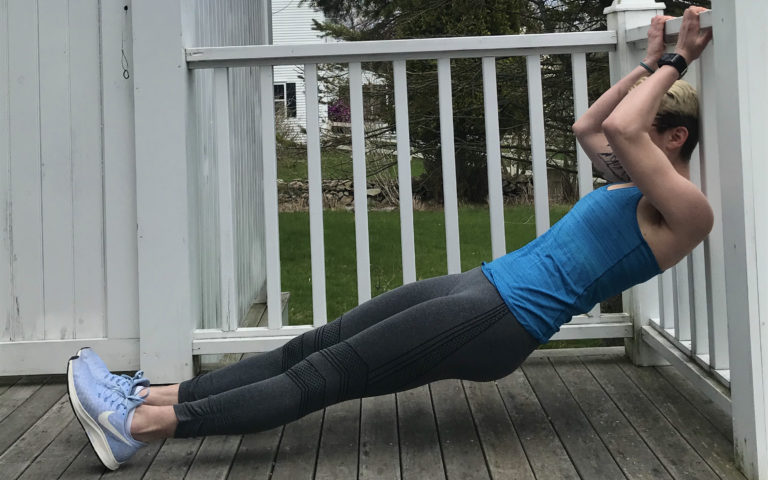

Make sure the wood frame above your door is solid; consider doing a few short hangs to test it. Do pullups in shorter sets rather than maxing out every time. Much like on a hangboard, use an open crimp position with your thumb down, not wrapped, while doing these pull-ups.
I know, you hate crimps. If your fingers aren’t up to this, find a tree branch instead! If one side of the branch is higher than the other, switch off which arm is positioned higher to balance out these pull-ups.
If you’re a little iffy on your door frame pull-ups, position yourself under a table or a railing (pictured above), legs sticking out where the chairs would be, and wrap your hands around the edge of the table, palms in. Pull yourself up and down, keeping your feet on the floor.
Textbook Hold (grip)


Grip strength is hard to train for unless you’re constantly climbing pinches. To keep your grip strong, walk around the house or the block a few times a day holding a big book in your hands. As for books, think massive tomes like Harry Potter and the Order of the Phoenix, War and Peace, or Infinite Jest. Your hands should hang at your sides with your fingers gripping the spine of the book, like you’re carrying a suitcase.
I used to walk around my high school with my history book at my side, pinched between my fingers as I changed classes. (As if anyone needed another reason to call me weird in high school.)
Plank (core)
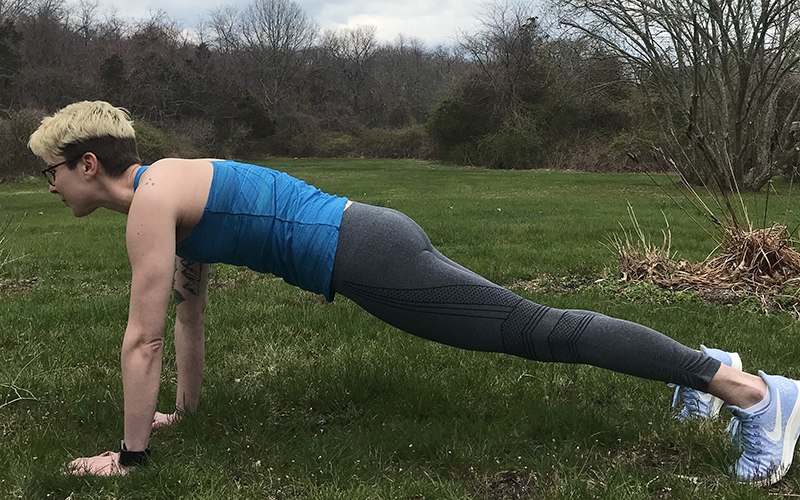

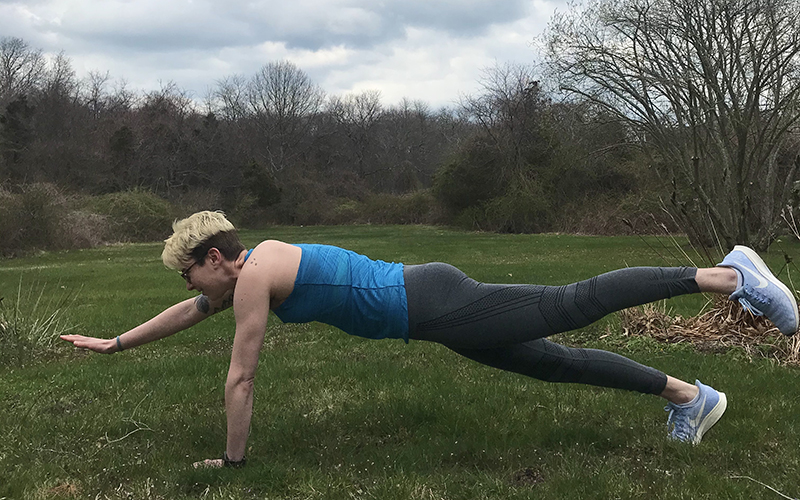

Core strength is vital for climbing. It improves balance, helps your footwork precision, and allows you to have more control over your movements. To plank, assume a push-up position. Making sure your back is straight and try to hold this position as long as you can. If you’re struggling holding the push-up position, bend your elbows 90 degrees and drop down to rest on your forearms, holding the position as long as you can.
Want a challenge? Try lifting your opposite leg and arm while you’re in the pushup position. Plank with your right leg and left arm in the air, and then switch, holding each position as long as you’d like.
Tricep Dips (upper body)
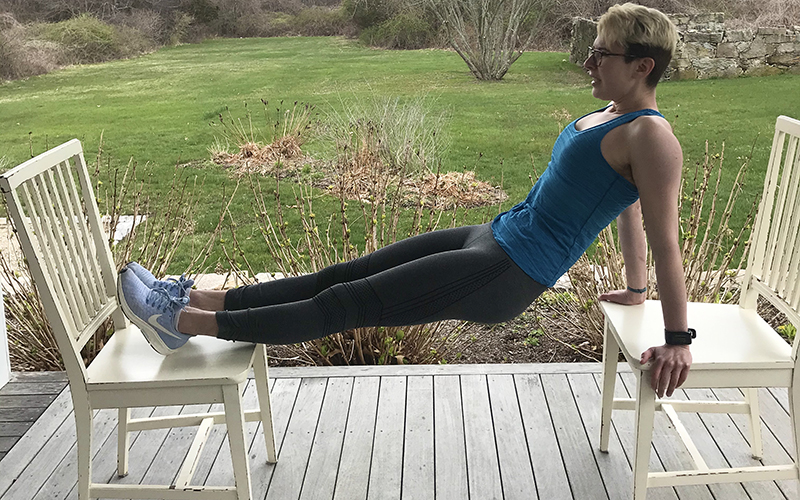

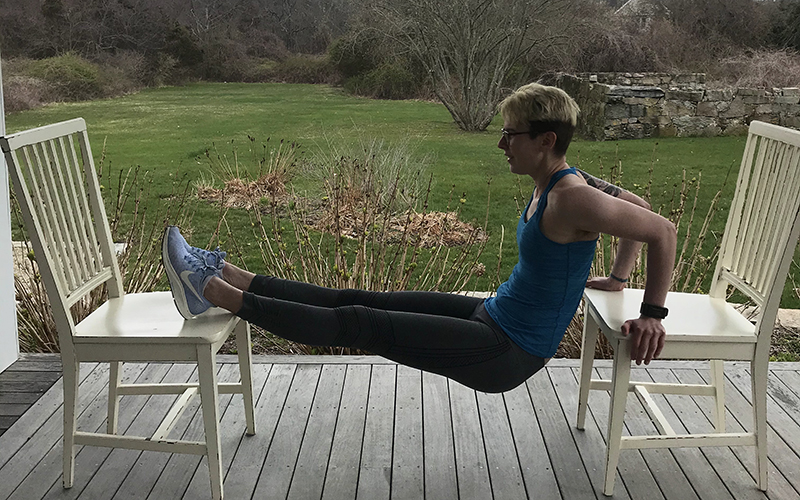

I love a good corner problem with tons of mantels. Tricep strength is key for this.
Take two chairs of similar height and space them apart so your feet can rest on one with your legs outstretched, and your hands on the other. Dip yourself down, keeping your head up and legs straight, then push yourself back up. For an abdominal workout, hold yourself in the upper position for 10 seconds before lowering yourself again.
Single-leg Toe Touches (lower body and balance)
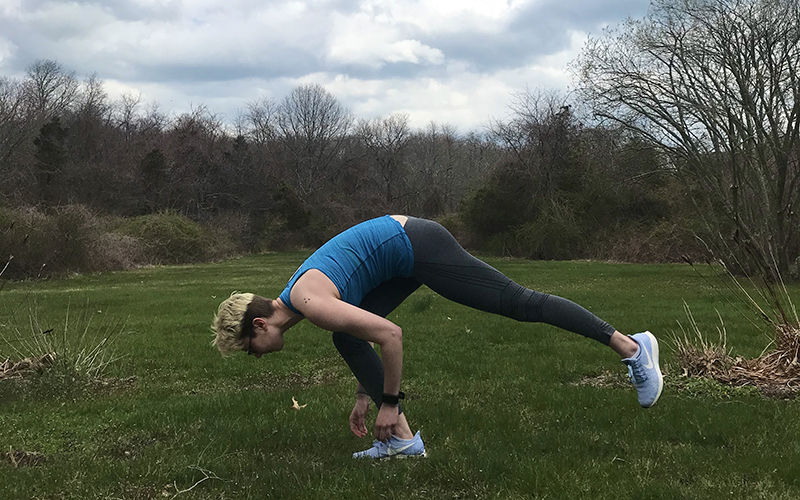

Balance is one of the most important parts of climbing. I can’t tell you how many times my climbing coach made me climb a slab with tennis balls in my hands just to focus on my foot balance.
Stand on your right leg with your left leg behind you, raised slightly off the floor. Bend your right leg and squat down to touch your left hand to your right big toe, then assume a standing position. Try to keep your left leg in the air behind you the whole time. Switch legs and continue.
If you want to make this a game, sterilize and place an open paper bag standing up on the ground in front of you. Each time you bend down, try to grab the top of the paper bag with your teeth and bring it back up with you. Each time you can grab the bag, cut a portion off the top, making it shorter. This movement should be done slowly, focusing on your balance.
30-second One-Legged Balance Stand (balance)
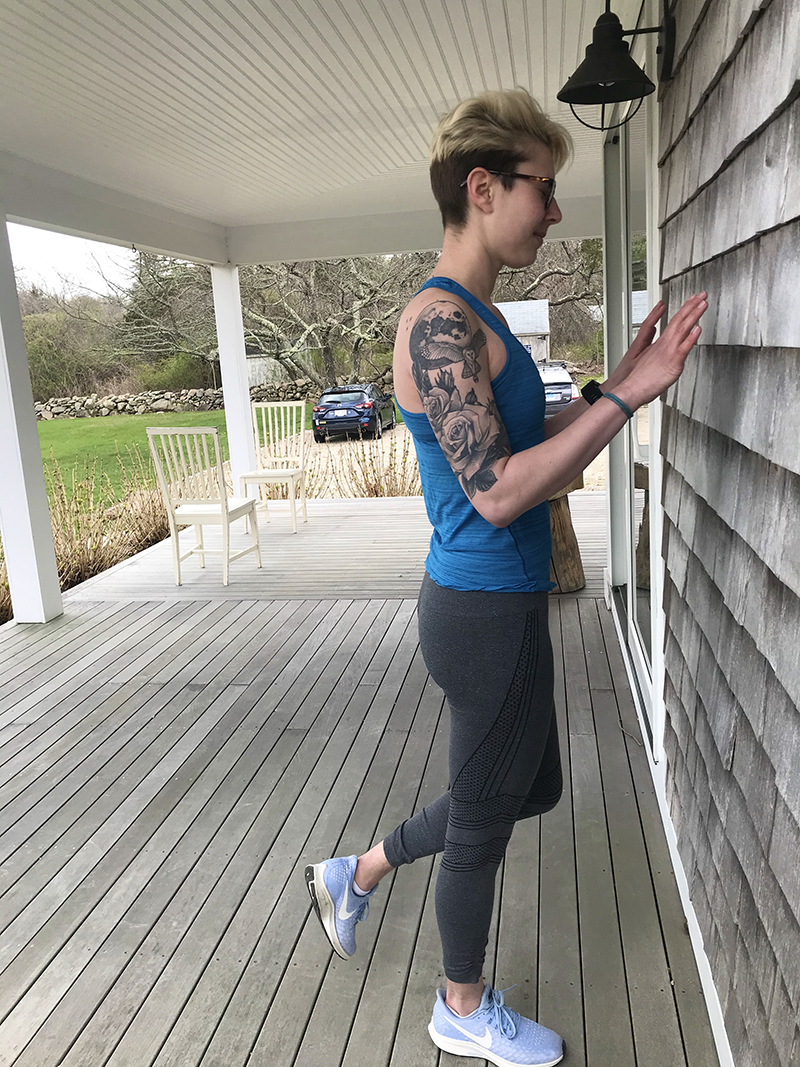

I like to call this the, “Oh, you think you’re strong? Try this” exercise.
Stand 5 inches in front of a wall, facing it. Put your hands in front of you, hovering right in front of the wall but not touching it. Close your eyes and raise one foot off the floor. Try to balance on the other foot for 30 seconds.
Don’t be fooled: This is very hard to do. Let your hands catch you against the wall if you think you’re falling, but try to correct your falling motion with your foot first. Think hard about balance, and really focus your energy into keeping a strong ankle. Strong ankles make strong climbers.
Wrist Winds (forearm strength)
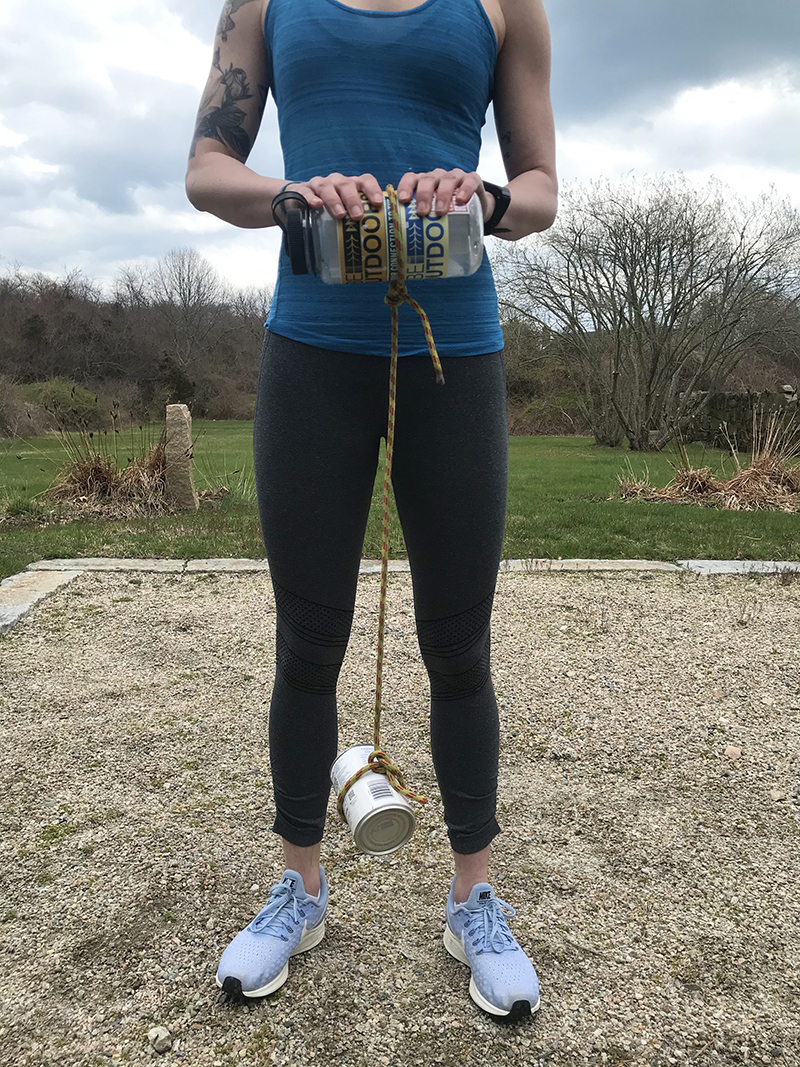

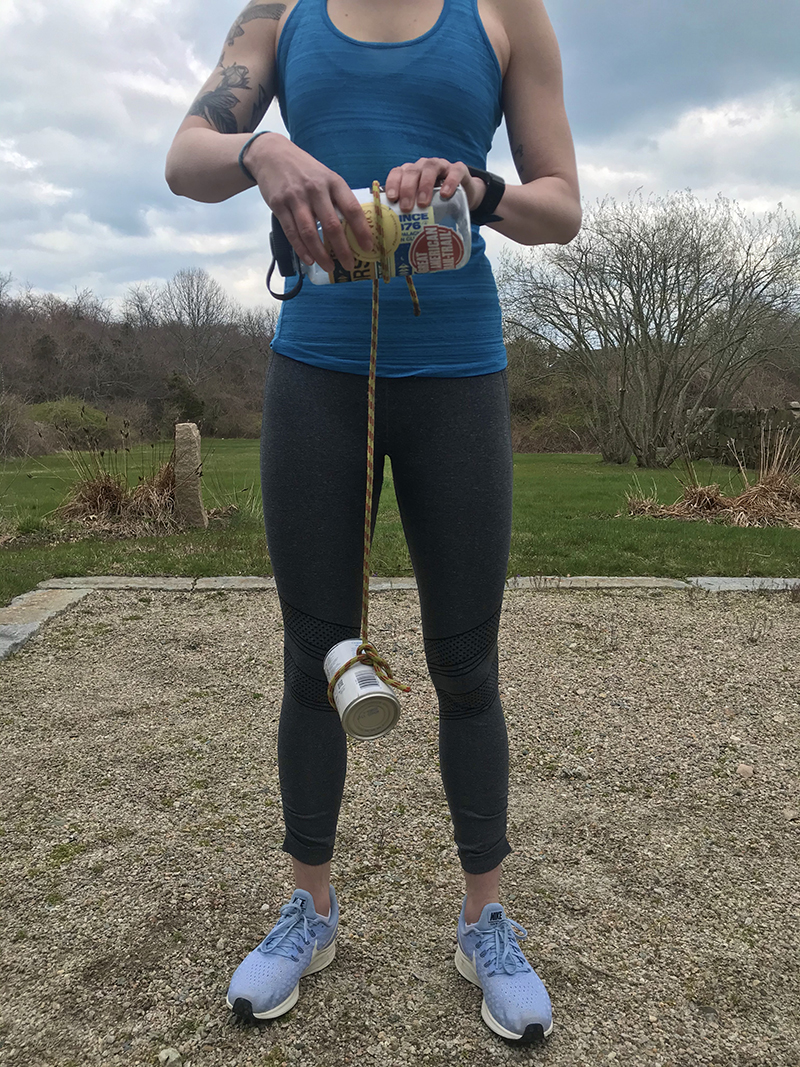

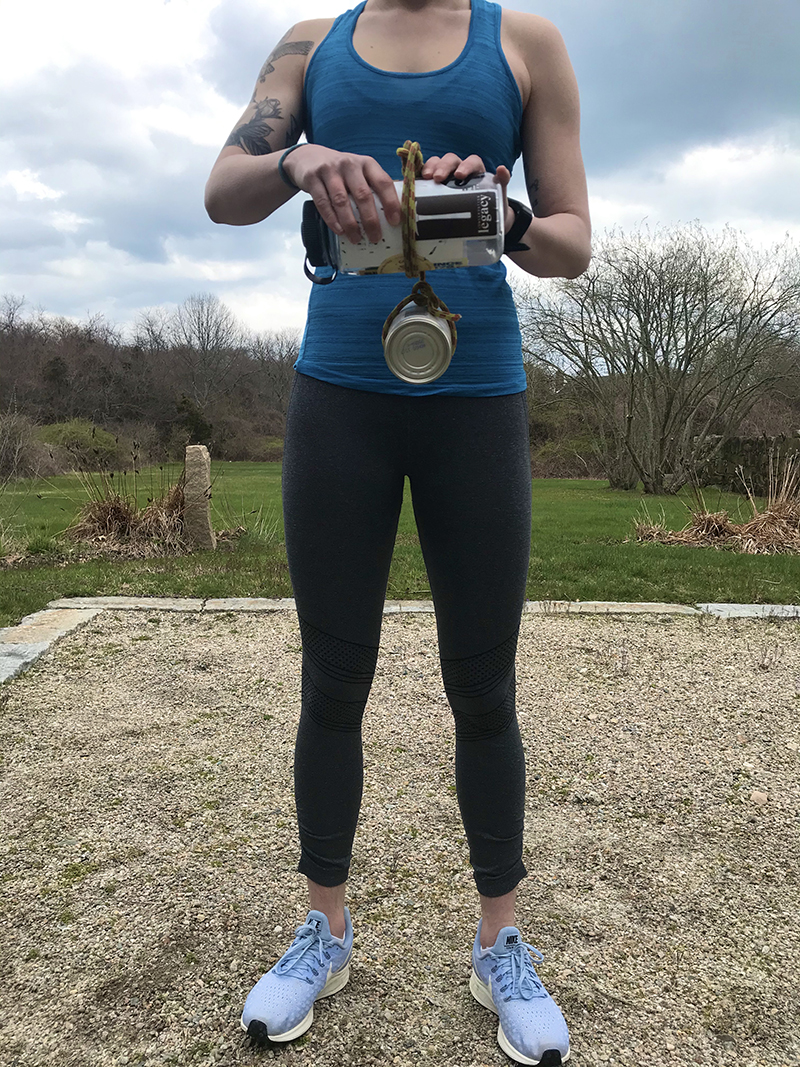

Almost nothing compares to coming down from a climb with your forearms pumped. Forearm strength and endurance is important to all categories of climbing, especially sport and multi-pitch.
For this exercise, you’ll need 3 things: rope (p-cord or a shoelace can work in a pinch); something cylindrical (like a hard plastic water bottle, a rolling pin, or an empty wine bottle); a can of soup or beans.
Tie one end of the rope around the water bottle, and the other end around the can of soup, leaving a good length of rope in the middle. Hold the water bottle sideways in both hands, and slowly twist it using your hands, raveling the rope around the water bottle and moving the can up toward you. Unravel the rope slowly using the reverse motion. Repeat until you feel that sweet burn! To make this harder, try tying multiple objects to the end of the rope.